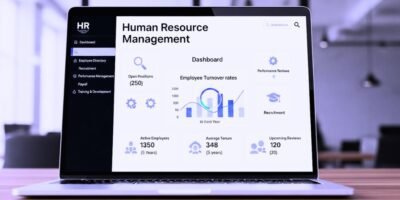In the era of information overload, organizations face the challenge of extracting meaningful insights from vast amounts of data. Interactive visualization has emerged as a powerful tool for understanding complex information and communicating insights effectively. Combining data analytics with visual representations enables users to explore, analyze, and interact with data in real time. This article explores the concept of interactive visualization, its benefits, and its transformative impact on data exploration and decision-making.
Understanding Interactive Visualization
Interactive visualization involves visual representations, such as charts, graphs, maps, and dashboards, to intuitively and interactively present complex data. Unlike static visualizations, it allows users to manipulate and explore data dynamically. Users can filter, drill down, zoom in, and interact with visual elements to uncover patterns, trends, and relationships within the data. This interactivity empowers users to gain deeper insights, make data-driven decisions, and communicate complex information effectively.
Enhanced Data Exploration
Interactive visualization facilitates data exploration by providing a dynamic and intuitive interface. Users can navigate through large datasets, zoom in on specific data points, and interactively filter and sort information based on various criteria. This interactivity allows users to uncover hidden insights, identify outliers, and spot trends that may go unnoticed. It fosters a deeper understanding of complex information by providing a holistic data view and enabling exploration from multiple angles.
Improved Decision-Making
Interactive visualization empowers users to make data-driven decisions by presenting information in a visually compelling and easily understandable format. Users can quickly identify correlations, cause-and-effect relationships, and patterns that inform decision-making by interacting with visual elements. With the ability to explore different scenarios and assess the impact of variables, decision-makers can make informed choices and mitigate risks effectively. They facilitate collaboration and consensus-building by enabling stakeholders to interact with the same data and engage in data-driven discussions.
Real-Time Insights
Interactive visualization allows users to access real-time data and insights. By connecting to live data sources or updating data in real time, users can stay informed about evolving trends and make decisions based on the most up-to-date information. Real-time interactive visualizations are particularly valuable in fast-paced environments, such as financial markets, supply chain management, and real-time monitoring systems, where timely insights can drive competitive advantage and operational efficiency.
Storytelling and Communication
Interactive visualization enables effective storytelling and communication of data insights. By combining visual representations with interactive elements, users can create compelling narratives that engage audiences and convey complex information in a digestible format. Users can guide viewers through data visualizations, allowing them to interact and explore specific aspects of the data. This interactive storytelling approach enhances audience engagement, promotes data literacy, and facilitates effective communication of insights to diverse stakeholders.
Democratization of Data
Interactive visualization promotes the democratization of data by making complex information accessible to a wider audience. With intuitive interfaces and user-friendly tools, individuals with varying technical expertise can explore and understand data without requiring specialized skills. It empowers employees across an organization to access and interpret data, fostering data-driven decision-making at all levels. Democratizing data eliminates information silos and promotes an organization’s data-driven culture.
Predictive and Prescriptive Analytics
Interactive visualization can integrate with advanced analytics techniques, such as predictive and prescriptive analytics. By combining interactive visualizations with machine learning algorithms, users can explore predictive models, assess different scenarios, and gain insights into future outcomes. It empowers organizations to make proactive decisions, optimize processes, and identify opportunities for innovation and growth.
Conclusion
Interactive visualization has revolutionized the way organizations explore and understand complex data. Combining data analytics with visual representations and interactivity enables users to uncover insights, make data-driven decisions, and effectively communicate information. The benefits of interactive visualization extend across various domains, from business intelligence and data analytics to scientific research and public policy. As data grows exponentially, interactive visualization will play an increasingly vital role in helping individuals and organizations harness the power of data and transform it into actionable insights.













